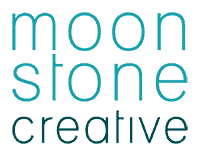It comes as no surprise that WordPress websites are some of the most popular websites in the world. Most websites you browse on everyday will have a base of WordPress. Have a look at these statistics to see how widely-spread they are:
- WordPress is used in over 178 countries and in over 60 different languages.
- 43.3% of websites worldwide are using WordPress, representing 62.8% of the Content Management System (CMS) market.
- As of May 2024, there were over 59,000 free plugins and over 12,000 free themes available through WordPress.org.
- WordPress powers 14.7% of the world’s top websites.
Why is WordPress so popular?
WordPress’s popularity as a world class website is clear, but why is it considered the gold standard? Here are a few reasons people choose this platform over the myriad of different options.
- Price Point and technology. The platform itself is free to use, download and adjust to however you would like it to be. Not only that, the system is open source. This means that a developer is able to go in and make adjustments to the code to develop whatever type of website they desire with whatever features, functions and aesthetics they wish. This allows for cutting edge developments in the software, with multiple contributors from all over the world adding to the collective knowledge base and development of the system. It’s a collaborative system, with some of the best minds in the business creating the best version of the platform possible.
- SEO Friendly. Google and other search engines rank WordPress website’s really well. There are SEO plugins available that will help with adding metadata to your site as well as plugins that can help speed up your site and optimise your content to ensure it’s easy for search engines to find.
- Easy to Update. Updates are built into the system. You can set auto updates on your WordPress platform to have it automatically happen as soon as they are available, giving you one less thing to worry about.
- Flexibility. The primary reason for the popularity of WordPress is its flexibility. It’s able to do many different things, simply because of the massive library of plug-ins and themes that are available and the simplicity in the design of the platform.
Which begs the question, is WordPress really that complex, and is it really that hard to work with?
The answer is no. It’s actually quite simple to manage, and due to its flexibility will be able to adapt and change as your business does, with some simple things to keep it moving.
There are a few things you should consider to ensure your WordPress site continues to serve its purpose:
Keep your content up to date
One of the benefits of keeping your content fresh and up to date is the benefits for your SEO and the relevancy of your website. You can read about SEO (Search Engine Optimisation) here. Essentially, each time you update your website, you are telling google, “Hey, this over here is relevant and new, perhaps you should tell people to look at it.” You are telling your audience that it’s a website worth going back to because they will get current information. Keep your content on your WordPress website fresh and relevant and potential customers will keep coming back. They will see your site as an authority in your field of expertise.
Plugin and theme updates
To give your site the best chance of being safe you need to keep your site theme updated as well as any plugins you use.
We can’t stop hackers altogether, but we don’t have to leave the back door open for them or the key under the mat. Updates to plugins and themes can contain critical security updates to protect against potential suspicious activity. These updates are all very easy to do, right from your dashboard. You will get notifications when there are updates available for your plugins. As previously mentioned, you can set your WordPress to auto update. Keep it up to date and it will stay as safe as possible.
Maintenance
Maintenance is important for any asset, and your website is no different. Here are a few things you should keep on top of to keep it humming along nicely:
- Ensure you have current backups of the entire site kept in more than one location.
- Check the validity of links and find and fix any 404 errors. There is nothing worse than finding out a link doesn’t work and not knowing how long it’s been sending your potential clients to a 404 page.
- Change your passwords regularly. Like anything with a password, you should be keeping them updated frequently and difficult to guess.
- Check and delete any spam comments.
Of course, if all this sounds arduous, please feel free to reach out. We don’t offer maintenance plans any more but there are a number of local businesses in Brisbane that I can definitely recommend. They will work with you to make sure these tasks are taken care of, keeping your site operating, while you get on with running your business.
